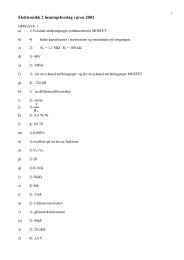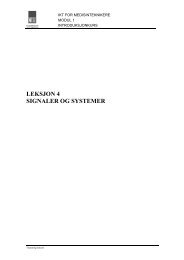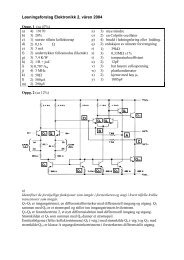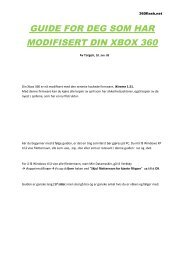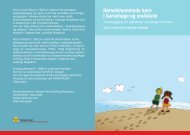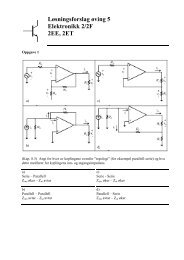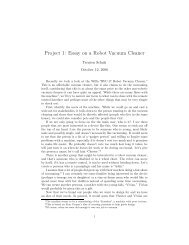The Online World resources handbook
The Online World resources handbook
The Online World resources handbook
You also want an ePaper? Increase the reach of your titles
YUMPU automatically turns print PDFs into web optimized ePapers that Google loves.
Electronic mail, telex, and fax http://home.eunet.no/~presno/bok/7.html<br />
Internet, X.400, or similar.<br />
A typical inter system email address consists of a user name, a mailbox system<br />
code, and sometimes also routing information. <strong>The</strong> problem is that there is no universal<br />
addressing format. Finding out how to write a given address may be surprisingly<br />
difficult.<br />
Some services are not set up for exchange of email with other services.<br />
If your favorite system lets you send mail to other services, make a note about the<br />
following:<br />
You may need to know how to rewrite the recipient's address to fit your system.<br />
For example, you may have to use a domain address to send through Internet, and<br />
a different form when sending through an X.400 network.<br />
<strong>The</strong> recipient's mailbox system may not be on a network that has an email<br />
exchange agreement with your system's network(s). Sometimes, you may have to<br />
use a commercial email relay service to get your mail across (see Chapter 9).<br />
You may need to know how to route a message through other systems to arrive at<br />
its destination. For example, mail from the Ulrik computer in Oslo for Dominique<br />
Christian on the Difer system in Paris (France) used to be routed through a center<br />
in London.<br />
Example: If you have problems sending email to me at the address<br />
presno@eunet.no, you may succeed by rewriting it as<br />
presno%login.eunet.no@listserv.nodak.edu . <strong>The</strong> message will go to<br />
listserv.nodak.edu, which will turn it into presno@eunet.no and forward it there.<br />
(More under Domain Name addressing.)<br />
While it may be easy to enclose binary files when sending to someone on your<br />
system, this may be impossible when sending across mailbox system boundaries.<br />
While it may be possible to send text containing embedded control codes and<br />
special language characters to users of your system, they may disappear when sent<br />
to people elsewhere. Your safest bet is to send your text as standard 7 bit ASCII<br />
text (see Appendix 4). It is the lowest common denominator between computers,<br />
software, networks, and users.<br />
Example: A user in Norway tried to send the Norwegian language line: "Jeg bor pÂ<br />
Karls¯y i Troms, Norge." <strong>The</strong> text was stored using Windows Latin1. <strong>The</strong> receiver<br />
got: "Jeg bor pe Kalsxy i Troms, Norge." Another user received the word "pÂ" as<br />
"p=E5."<br />
If you are using WordPerfect or Word for Windows on an MS DOS computer,<br />
consider storing your text as DOS text before sending.<br />
X.400 addressing<br />
X.400 is a standard for electronic mail developed by ITU TSS. It is used on some large<br />
private and public networks throughout the world.<br />
EDI (Electronic Data Interchange) uses X.400 as a transport mechanism for<br />
coordination of electronic part ordering, stock control and payment. X.400 is used to<br />
connect EDI systems between companies and suppliers.<br />
<strong>The</strong> X.400 addressing syntax is very different from domain addressing. To send a<br />
message from an X.400 mailbox to my address (presno@eunet.no), you may have to<br />
write it like this:<br />
(C:NO,ADMD:uninett,PRMD:uninett,O:eunet,OU:login,S:presno)<br />
Alas, it's not so standard as the domain addressing schemes. On other X.400 networks,<br />
the address must be written in one of the following formats or in yet other ways:<br />
(C:US,A:Telemail,P:Internet,"RFC 822":)<br />
("RFC 822": , SITE:INTERNET)<br />
'(C:USA,A:TELEMAIL,P:INTERNET,"RFC 822":) DEL'<br />
(site: INTERNET,ID: )<br />
"RFC 822=presno(a)login.eunet.no @ GATEWAY]INTERNET/TELEMAIL/US"<br />
S=presno/OU=login/ORG=eunet/P=uninett/C=no<br />
17 of 20 23.11.2009 15:45



